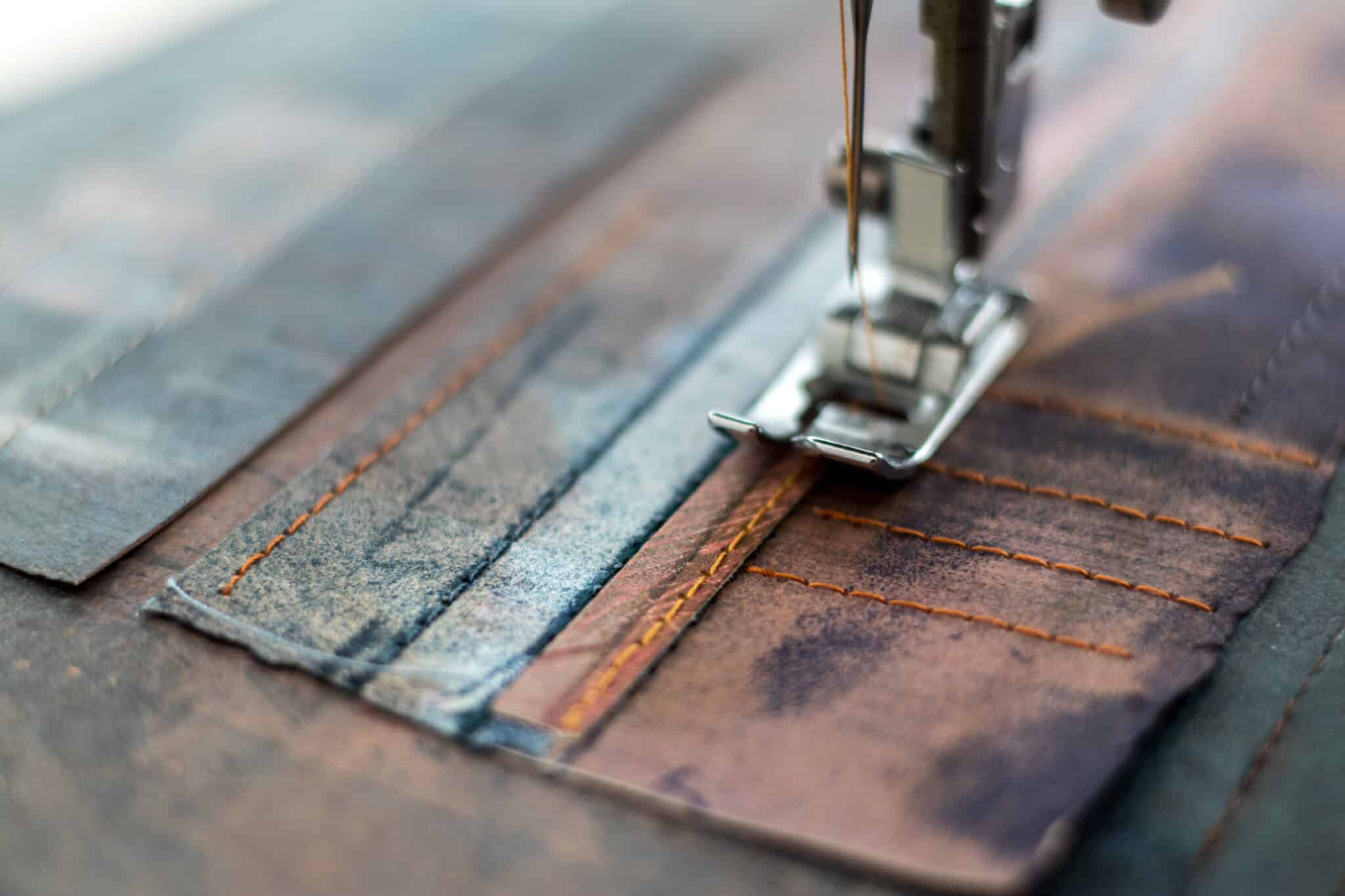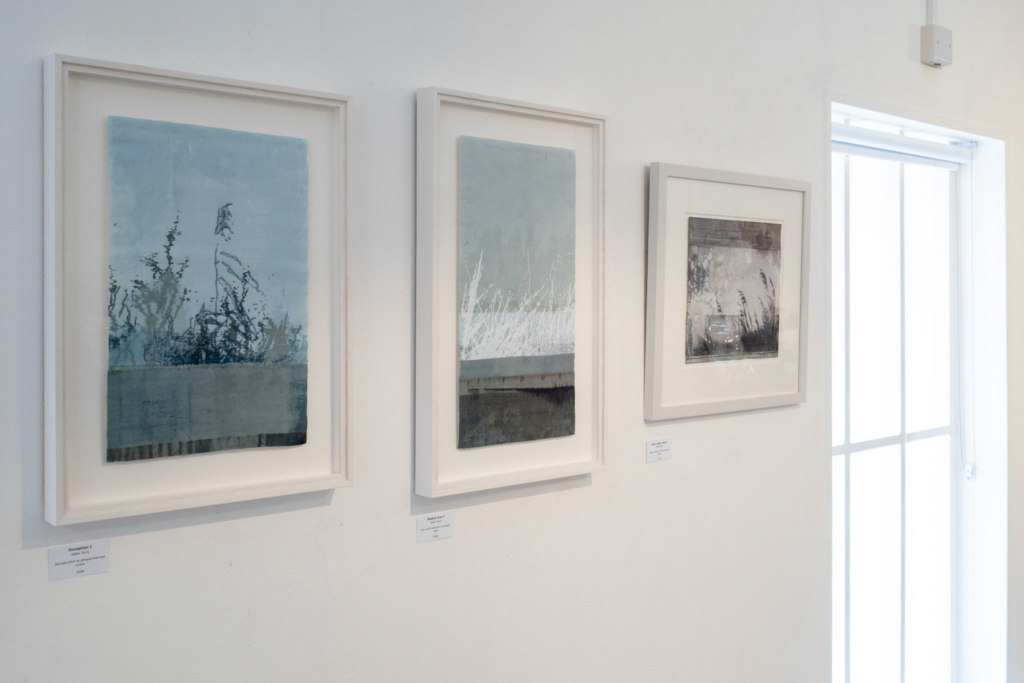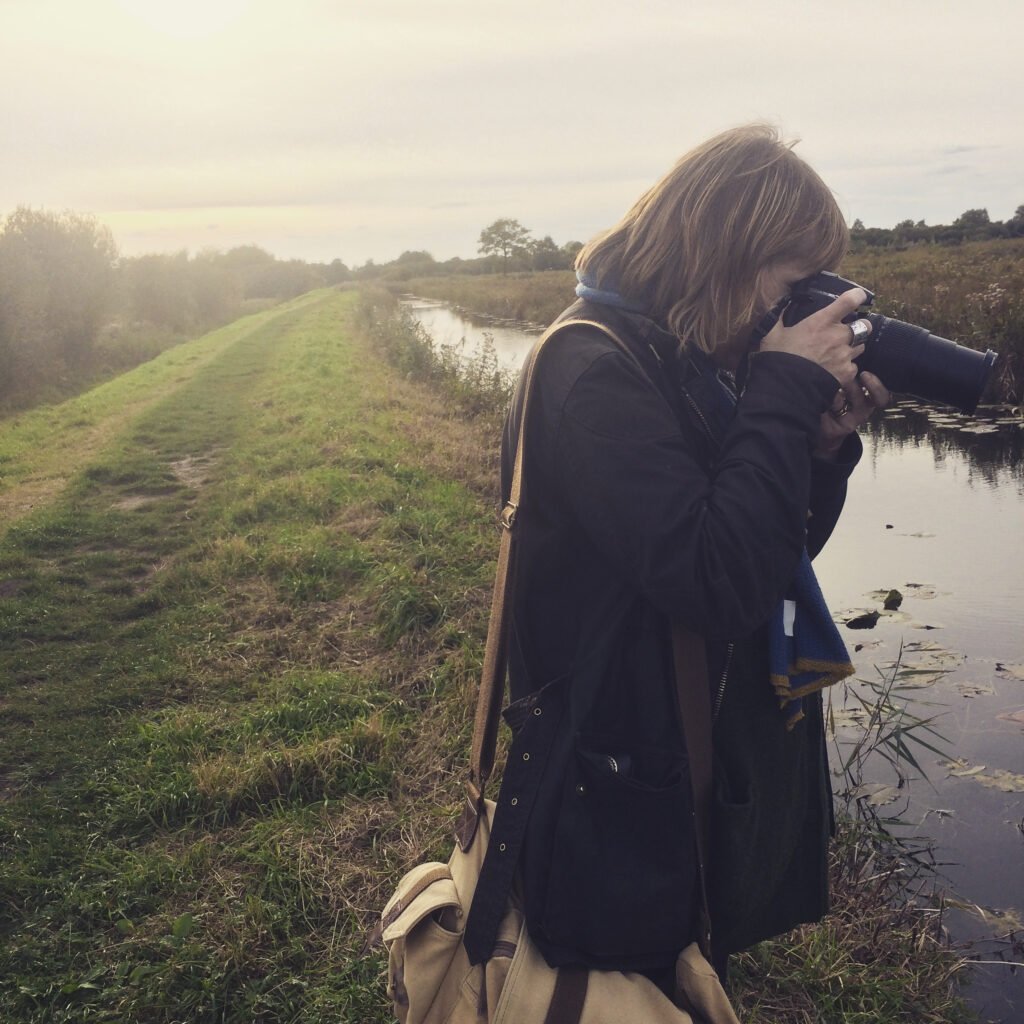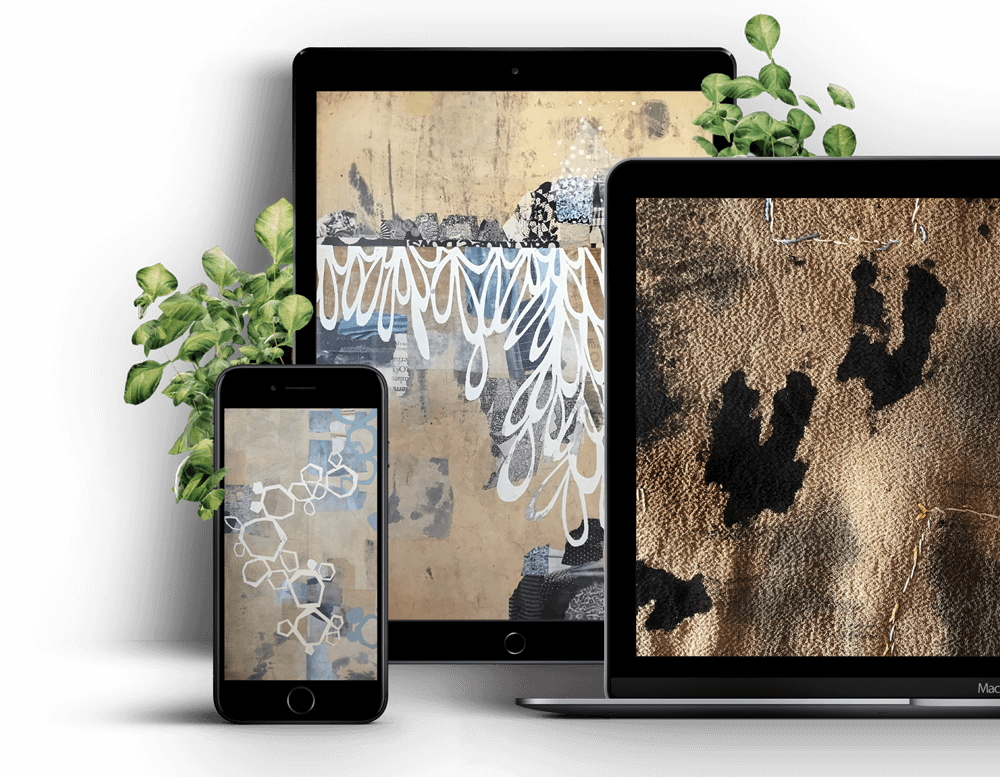Diane Franklin: Attleboro Art Museum Exhibition
A Review of 100: Marking the Attleboro Arts Museum’s Centennial, Attleboro Arts Museum, Attleboro, MA, US
“Stunning,” “innovative,” and “inspiring” were words I heard as I walked through the Attleboro Arts Museum’s* current exhibition, 100: Marking the Attleboro Arts Museum’s Centennial. The exhibition runs from April 11th through May 6th, 2023.
These words rang true as I observed a wide variety of strong artworks that, while very different from each other in both subject matter and materials used, conveyed the exhibit’s theme in ways that were compelling, varied, and fresh. Many of the pieces utilized recycled materials, reflecting an increasing desire of many artists to reuse materials that had had a previous life, both as a way of reducing waste and as an expression of the perceived value of reuse and repurposing.
In late 2022, artists from the New England chapter of the Surface Design Association were invited to submit work for this juried exhibition. The work of 22 artists was selected. The guidelines for submission were somewhat amorphous. Artworks could either relate to the museum’s centennial year or decade, or the concept of 100 could be construed more broadly. Artists could choose to visually mark the ensuing ten decades of time, talk about the process of aging, or find ways to express units of 100. Each of these ways of thinking about the guidelines was evident in the final exhibition, as were the wide variety of fiber mediums in which work was created.
A few artists focused on the decade of the 1920s. Martha Heller created an apron embroidered with the names of the women who founded the museum. She machine stitched with thread on a stabilizer that was then dissolved, leaving a diaphanous garment made even more interesting by the shadows it cast.
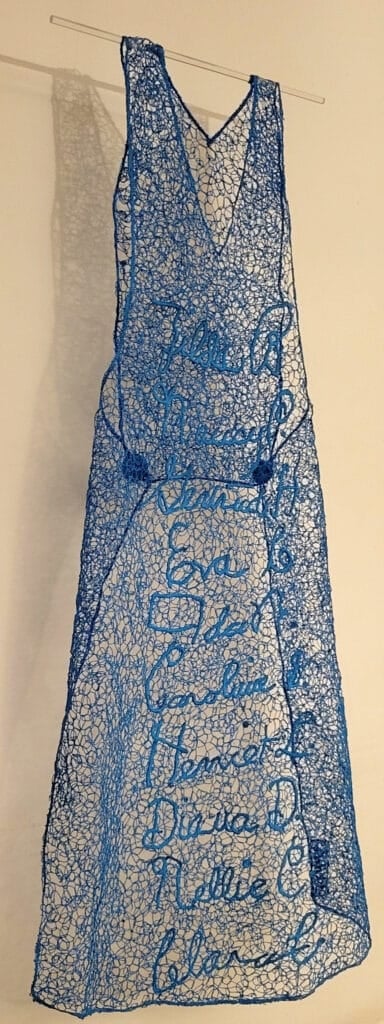
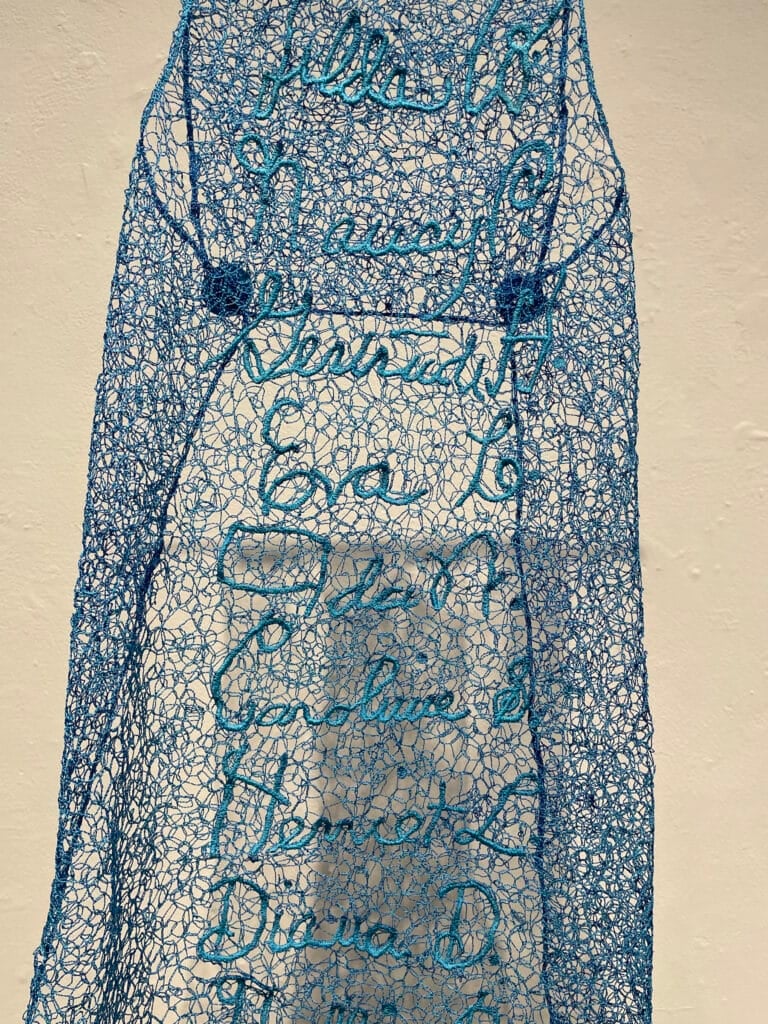
Laurie Carlson Steger crafted a woven tapestry with surface stitching based on a sketch she had made in a jazz club while listening to a song performed by violinist Stephane Grappelli. Her piece was a celebration of jazz, the freestyle music that emerged in 1920s America.
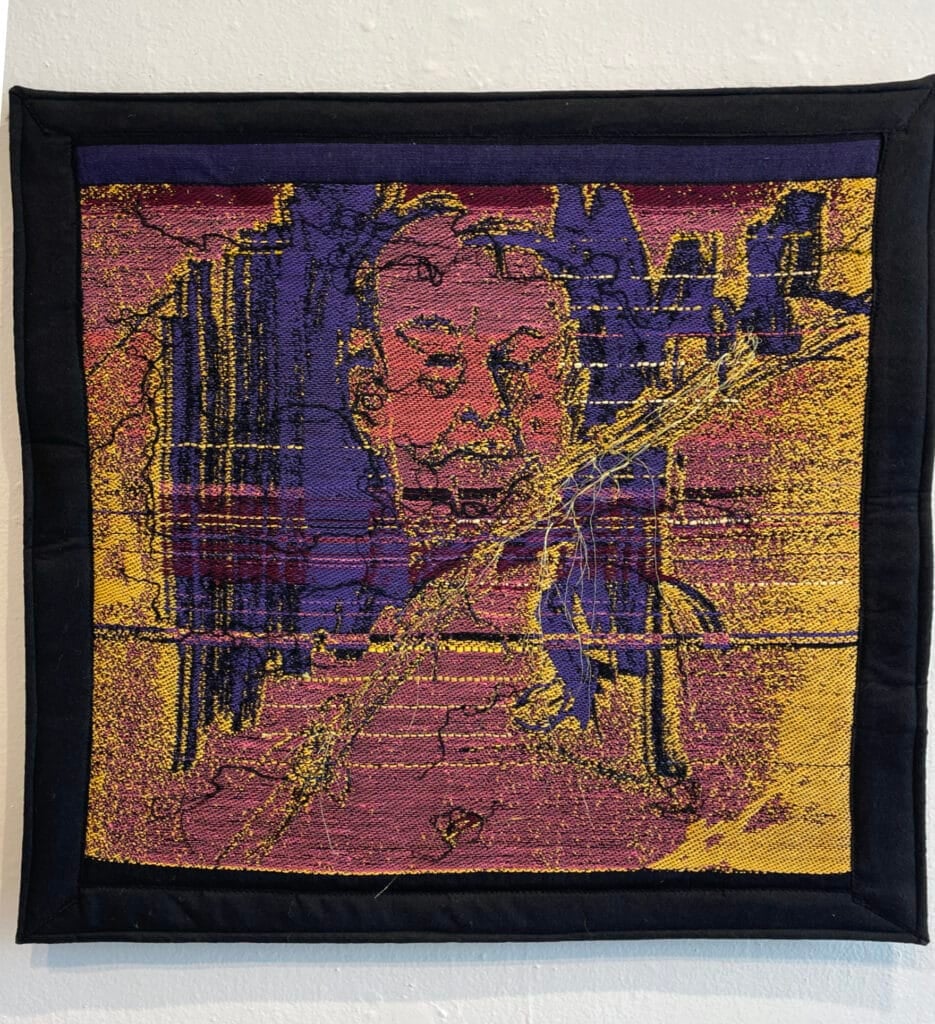
I made a paper collage depicting beautiful and fashionable women dressed by the House of Worth. These wealthy women could afford the price of haute couture and the privileged lifestyle of the roaring twenties that went along with their clothing. The piece’s title, Women of Worth, is an ironic take on both the name of the couturier Worth and the fact that only women of worth—a small fraction of 1920s women—could afford this clothing and lifestyle.
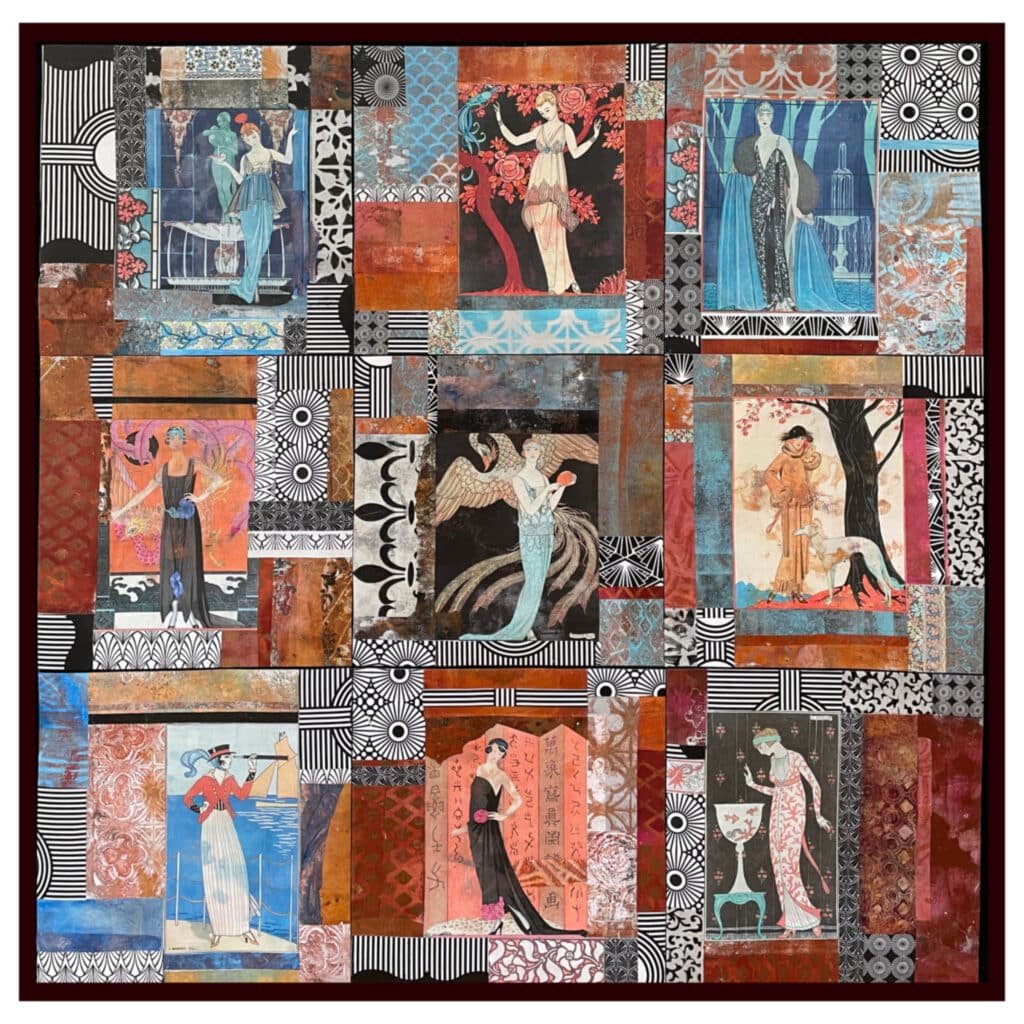 Several exhibiting artists focused on the number 100 or multiples thereof. Gunta Kaza constructed an overflowing basket from recycled maps, using more than 10,000 pieces of old maps to create both her basket and the folded pieces spilling out of it. Map fragments were folded, woven and sewn to create the basket structure. The piece conveys a sense of abundance and also evokes a feeling of awe when thinking about the amount of work required to create more than 10,000 small shapes.
Several exhibiting artists focused on the number 100 or multiples thereof. Gunta Kaza constructed an overflowing basket from recycled maps, using more than 10,000 pieces of old maps to create both her basket and the folded pieces spilling out of it. Map fragments were folded, woven and sewn to create the basket structure. The piece conveys a sense of abundance and also evokes a feeling of awe when thinking about the amount of work required to create more than 10,000 small shapes.
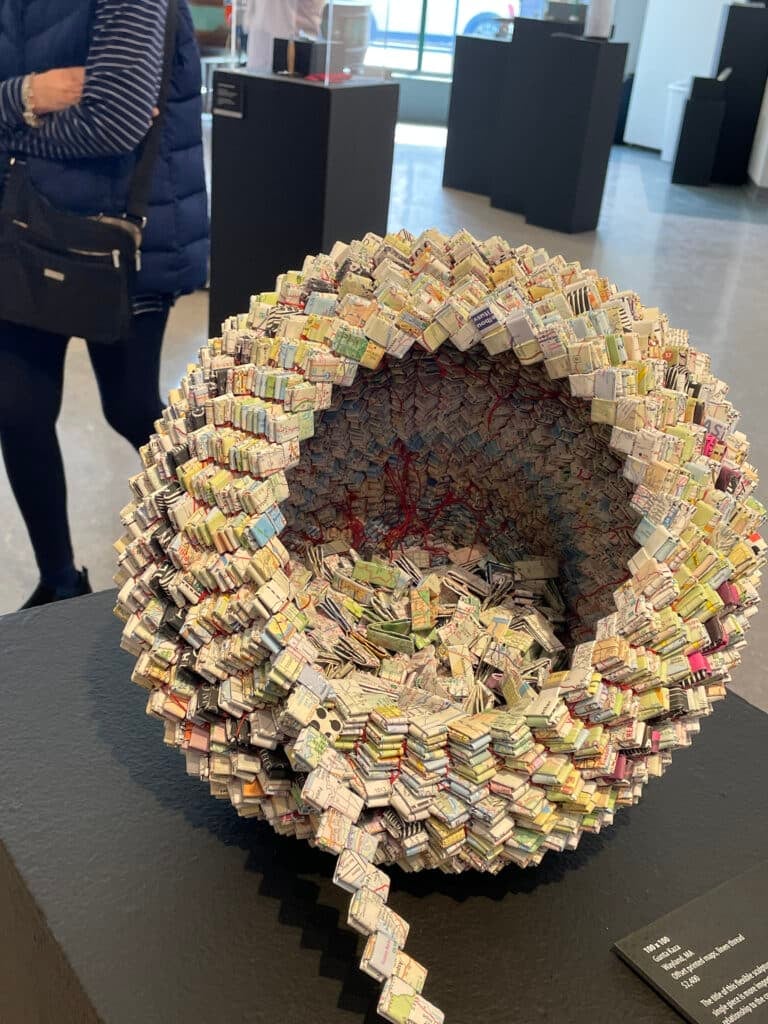
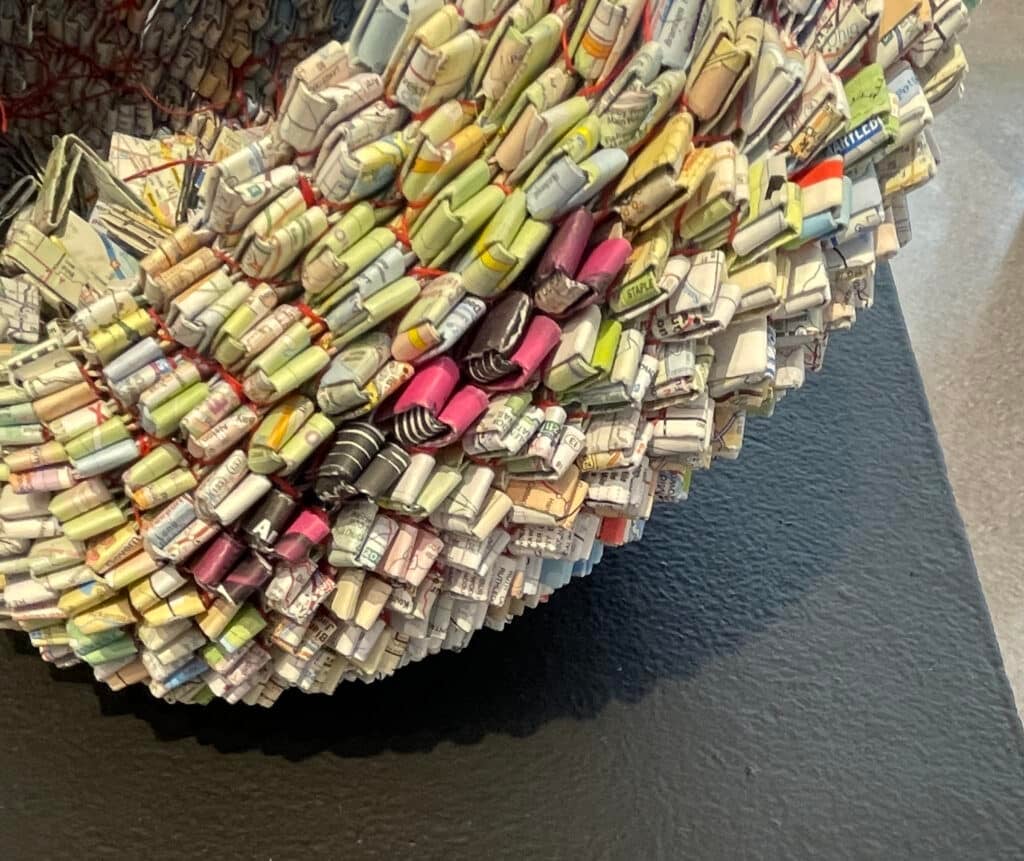
Karen McCarthy celebrated the life of the seminally influential textile artist and weaving icon Lenore Tawney, who lived until her 100th year. McCarthy’s piece is comprised of paste paper woven in the circle-in-square motif often used by Tawney herself. The colors used reflect Tawney’s love of nature and her strong, meditative and tranquil nature.
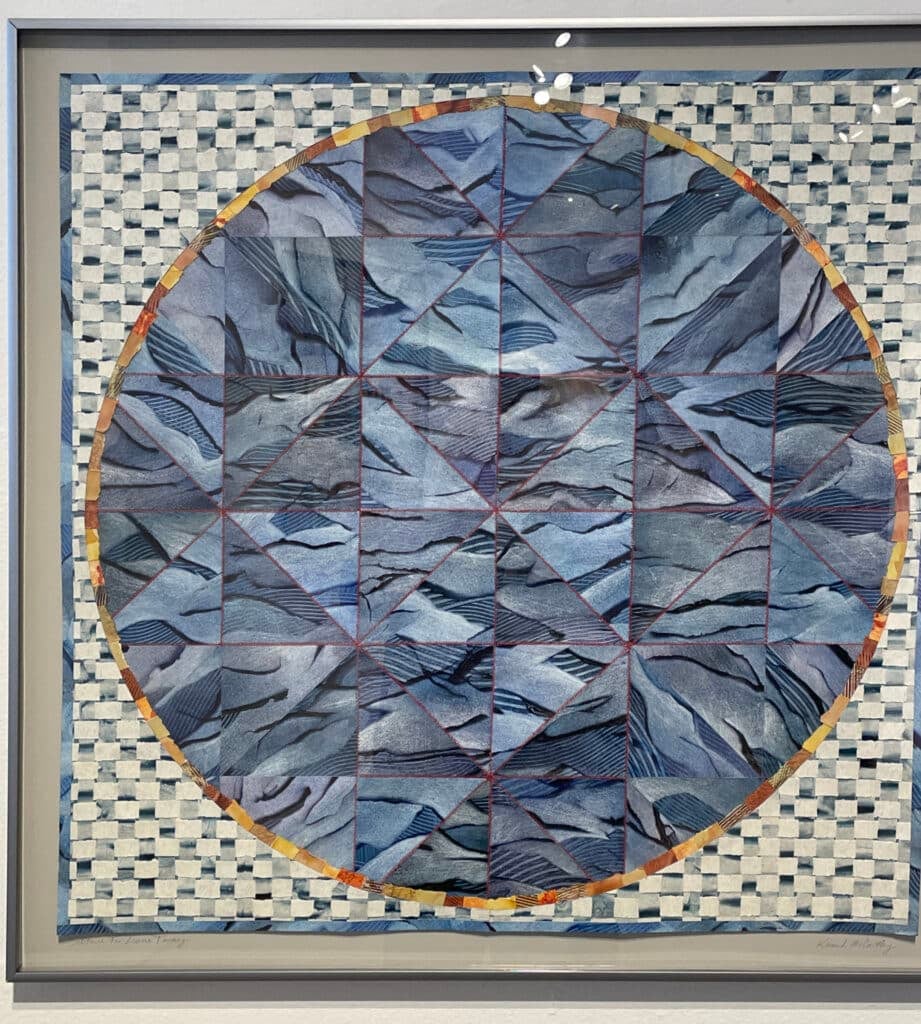
Carol Anne Grotrian repurposed work she had made during the Covid lockdown. Her piece combined strips of indigo-dyed cloth, on which she had hand-sewn blocks of 100 stitches, and scraps of shibori-dyed fabric, overdyed with indigo, previously used as teaching samples. The stitching originally began as a Covid meditation to record the number of deaths caused by Covid. As the number of deaths grew so large, Grotrian realized she would need an airplane hangar to exhibit them, so she set the pieces aside. It became a positive act for her to switch the intent of the work to something celebratory that commemorated 100 years of a cultural institution.
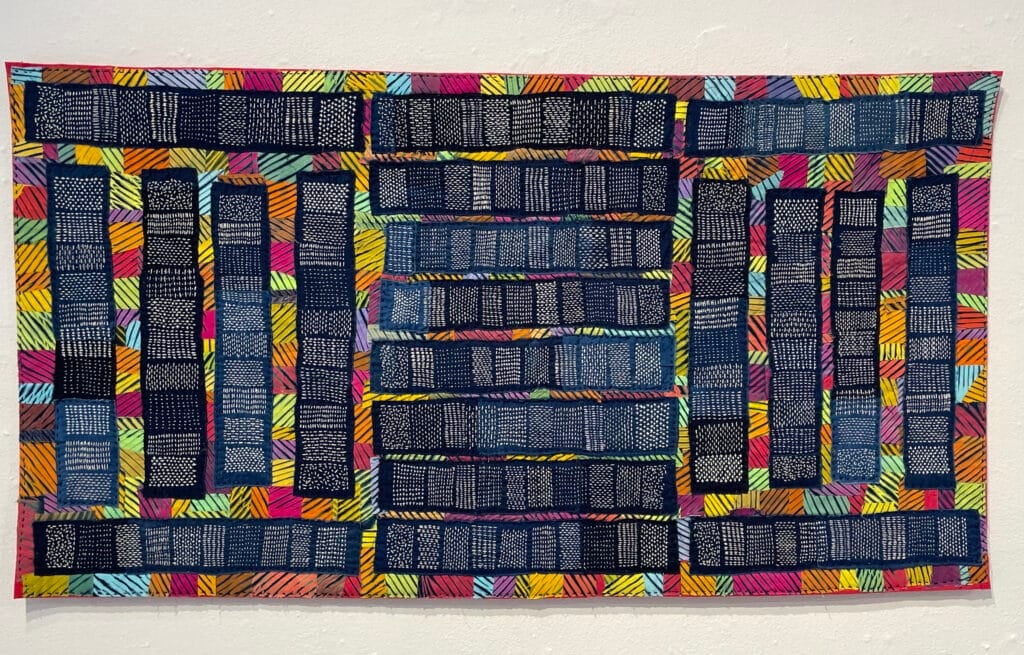
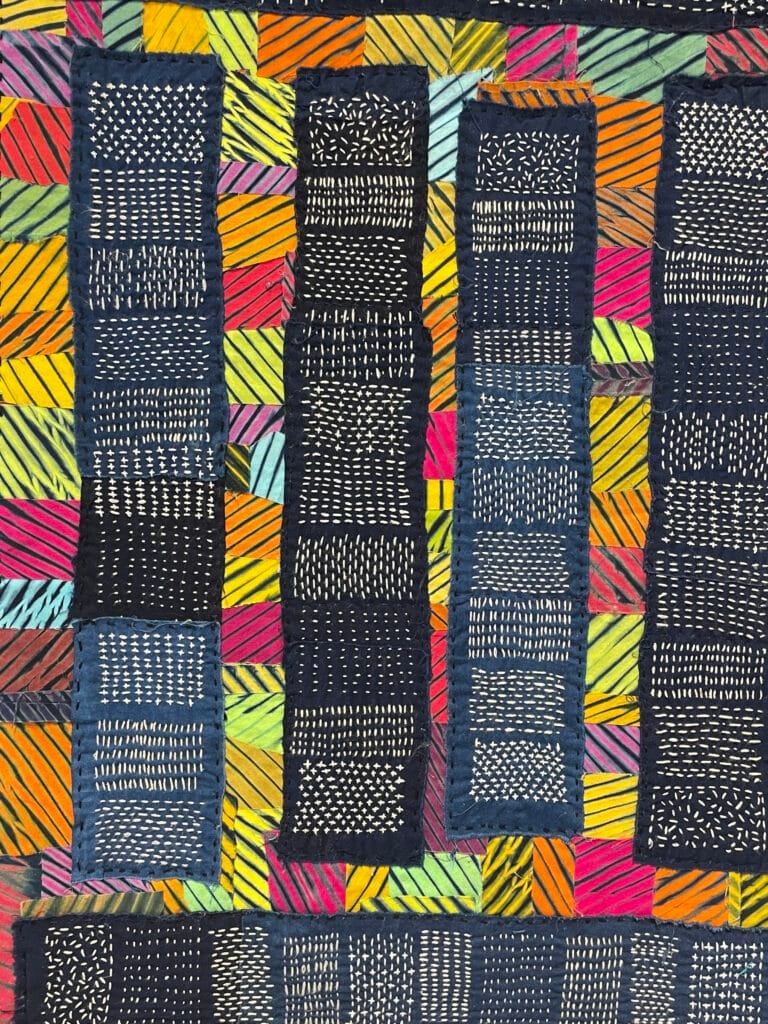
A completely different, and very creative, interpretation of the number 100 was made by artist Sarah Haskell. She collected 100 beach stones from the coast of Maine and encased them in crocheted linen dyed with indigo. She created another 100 crocheted stones using red-dyed linen. These were artfully displayed on pedestals
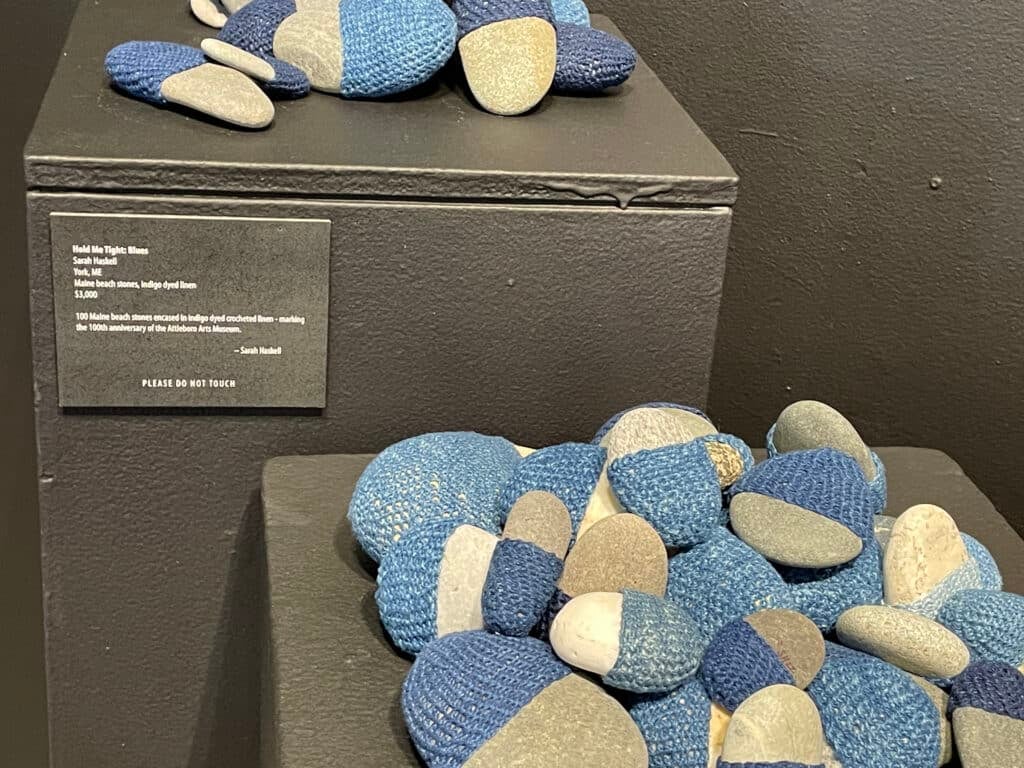
Ania Gilmore created a loose-leaf artist book by cutting out 100 Wycinanki pieces from Italian paper. These complex cutouts were arranged in a 10 by 10 grid and hung on the wall with magnets. To create her piece, she used a traditional Polish folk-art process in which each intricate ornament is cut out by hand with scissors.
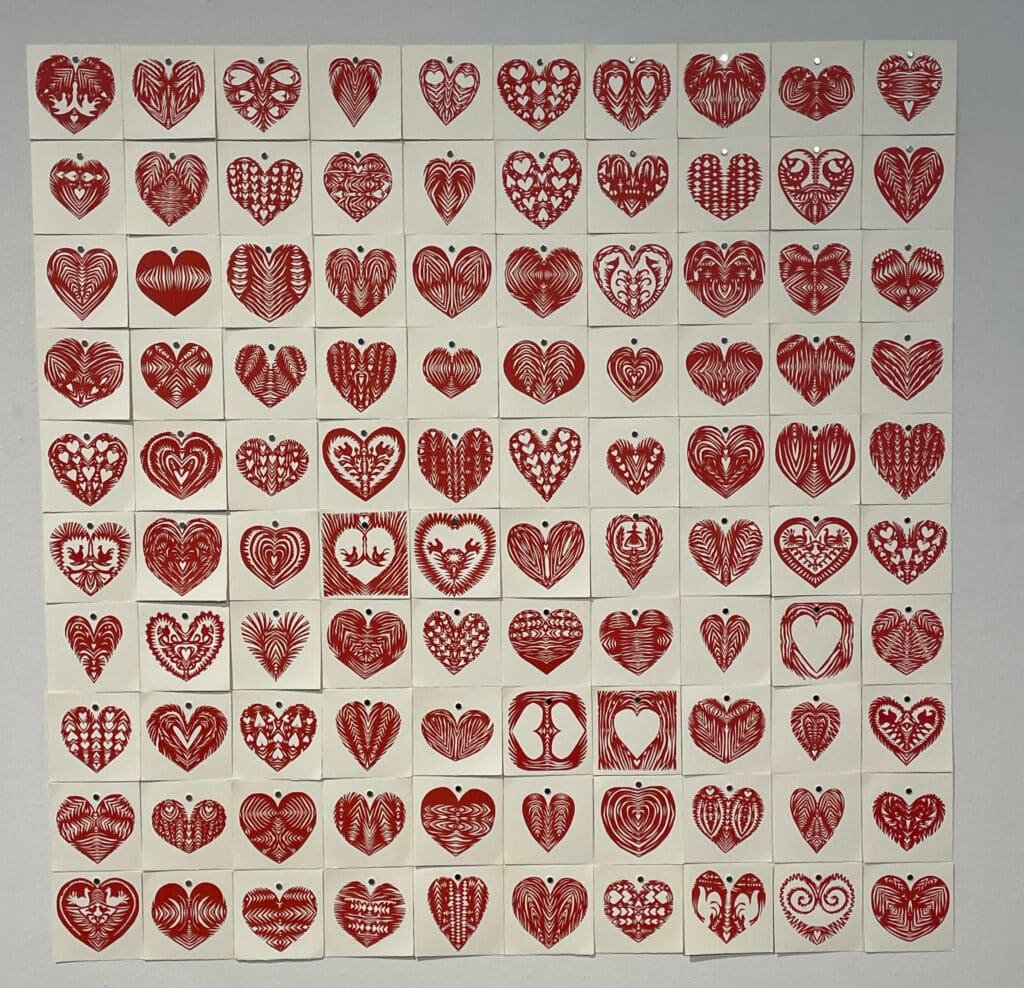
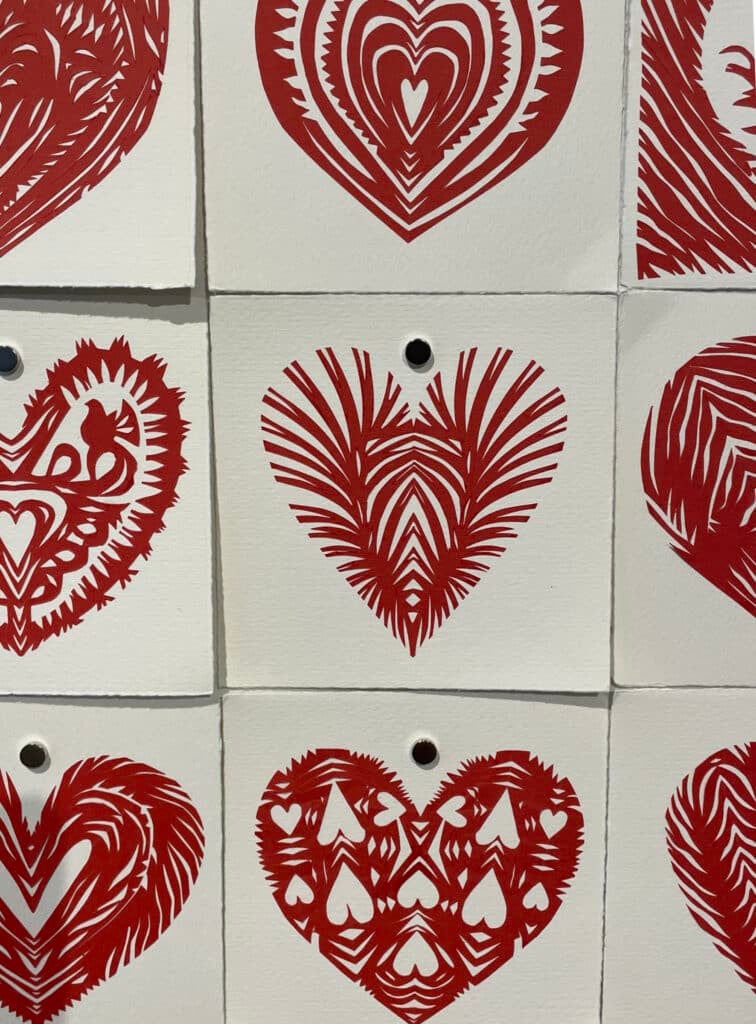
Other artists interpreted the exhibition’s theme in unique ways. Kimberley Harding focused on aging by creating a sculpture of her grandmother-in-law, Celia, who died at age 100. The piece was made from one of Celia’s worn-out tablecloths which was combined with other materials to make an amazingly lifelike sculptural fiber portrait.
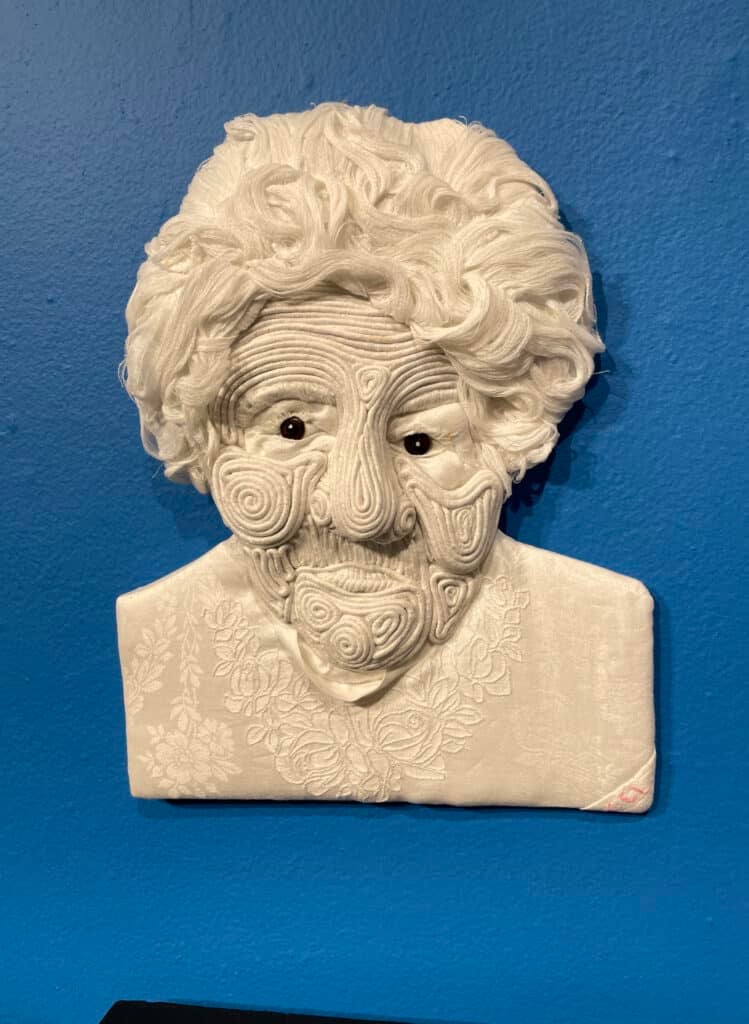
Merrill Comeau connected concerns about immigration, increased nationalism, and support of unfettered business, prevalent in the 1920s, with similar concerns about the same issues today. In her monumental triptych, Red, White, and Blue 2, consisting of 3 hand-stitched banners made from repurposed fabrics, she explored today’s climate of political strife and focused on the need to continually rebuild and care for America’s democracy.
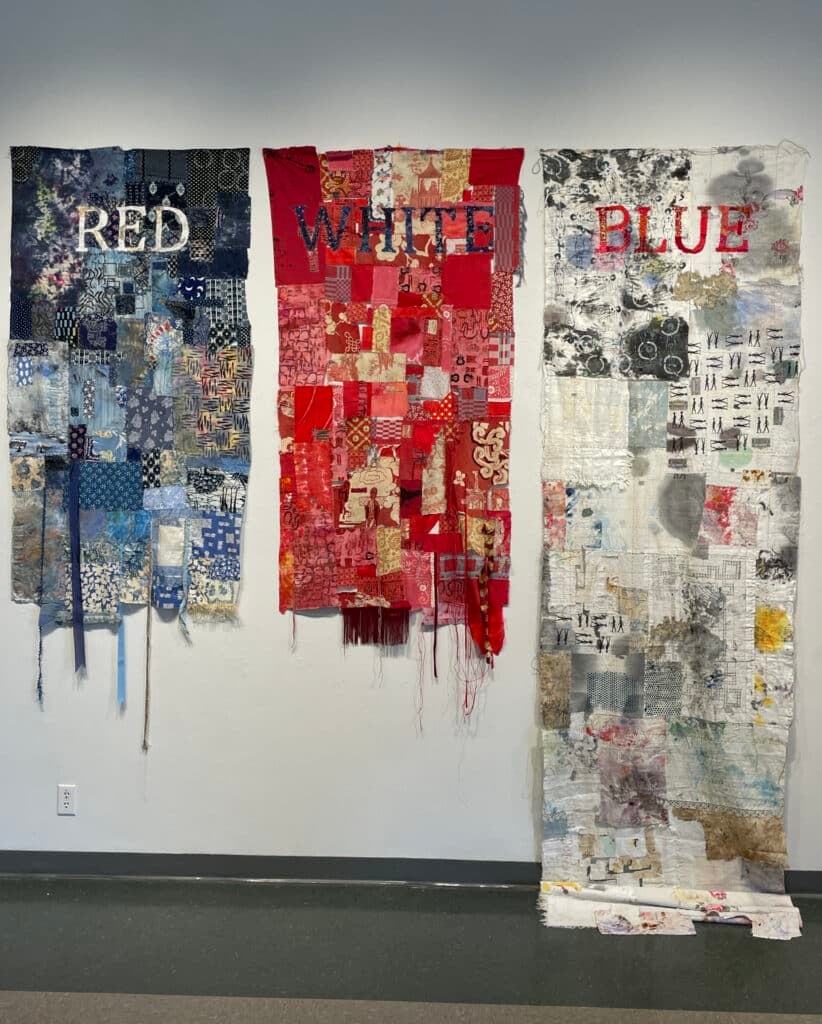
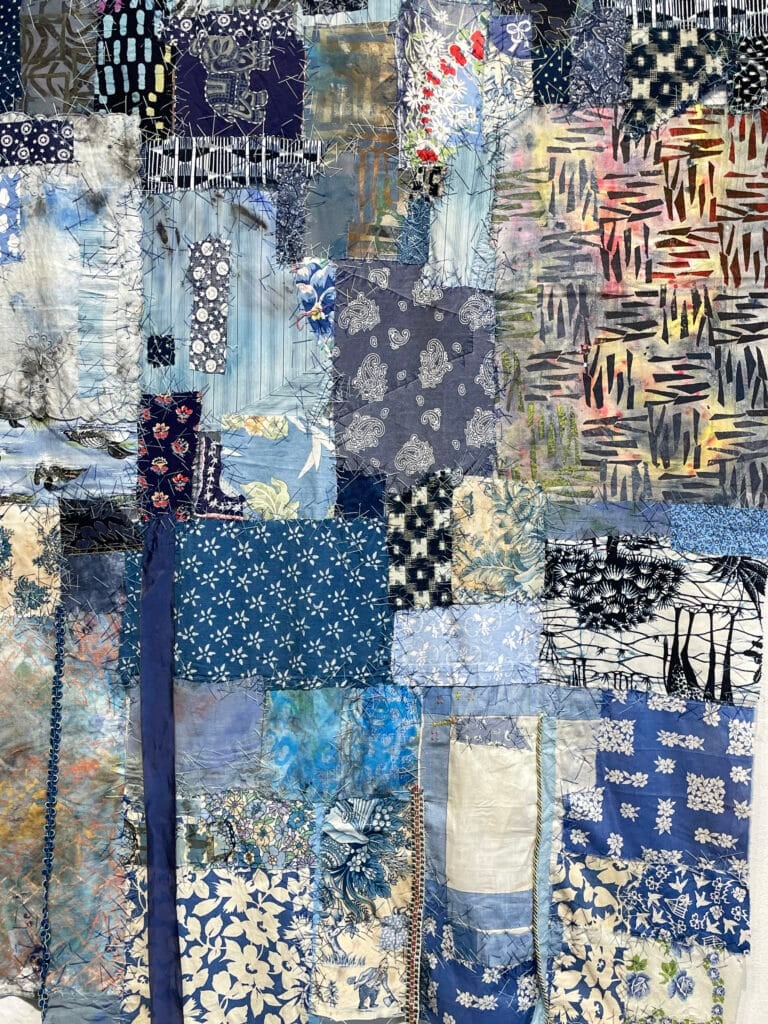
Katy Rodden Walker’s piece, Fewer than 100 Days, was the most unusual contribution to the exhibition. Using upcycled plastic waste, netting, filament, an electric motor, and lights, she created a kinetic sculpture from single-use plastics. The sculpture’s 100 plastic bags were sewn to appear like jellyfish, oscillating in air that is blown by the sculpture’s motor. Despite its somewhat ominous message, the sculpture has an ethereal beauty, reminding us that beauty can come from unusual or even deadly sources. More information on this piece can be found here.
Other pieces, not discussed or shown here, echoed political themes, or played on the idea of the number 100.
What struck me most about this exhibition were the myriad ways that different artists interpreted the exhibit’s theme and the fascinating range of materials that were used to create their artworks. I was especially intrigued by the messaging and stories carried by the artworks themselves, messages that focused on important social issues or that addressed issues of sustainability. For several days after my visit, I continued to think about the artworks presented and the stories they told. To me, this kind of lingering pondering is the mark of a strong and important exhibition.
About
The Attleboro Arts Museum is a small private arts museum in southern Massachusetts, US. Founded by 10 women in 1923 as a chapter of the American Federation of Art, the museum has evolved into an arts organization that serves 50,000 people each year. All exhibitions and events are free, in keeping with the museum’s credo of “arts for all.”
Diane Franklin is an artist, teacher and writer living in Boston, Massachusetts, USA. She is also the author of Dyeing Alchemy, a Primer and Workbook about Procion MX Dyeing.
No video selected
Select a video type in the sidebar.
Join Our Newsletter
OUR YOUTUBE CHANNEL
View our interviews and more on our Youtube channel!
OUR FACEBOOK GROUP
Join our Community and stay updated with our upcoming announcements!

